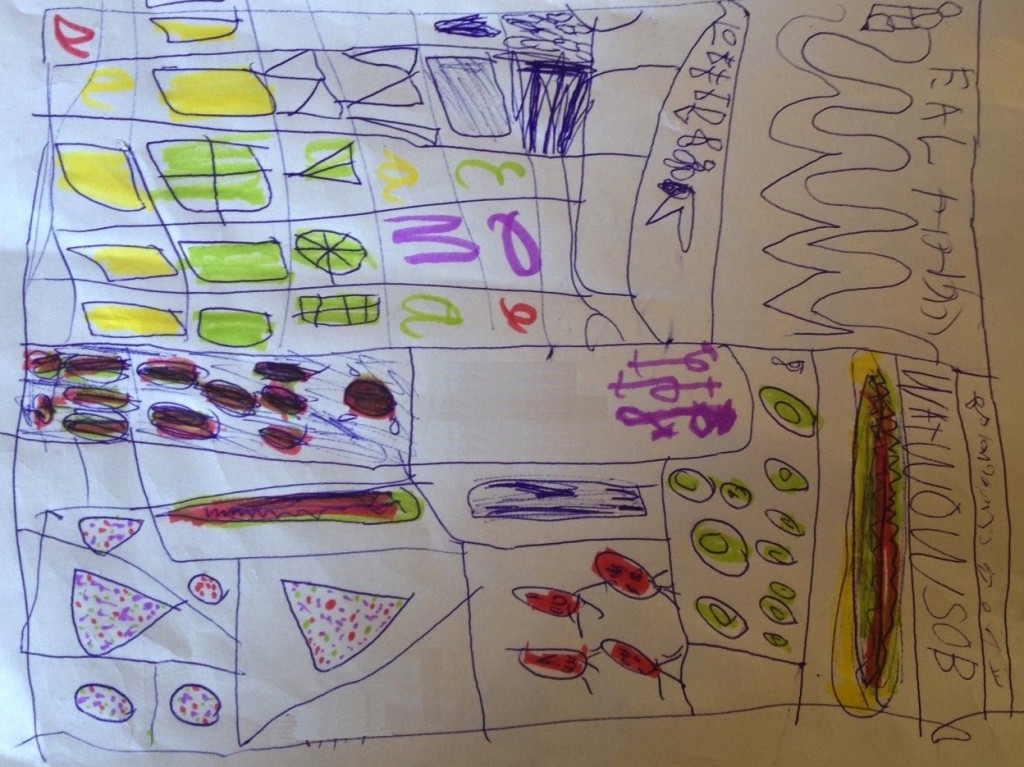Some Jubakos have dividers – either flexible ones or fixed but many come without giving the most plating options. Jubakos are carefully filled, pleasing the eye as much as the food the palate. Not surprisingly those pieces of artistic arranged osechi are carefully planned upfront. Color combinations are in taken into account as much as consistency and shapes. Good practice is to do the design on paper before the filling. Here is the plan my daughter came up with yesterday for arranging osechi in her own Jubako for the next New Years Day:

In her box she wants to include
Left:
– top: Tamagoyaki (rolled omelet)
– second from the top: Kuromamé (sweet, black soy beans)
– third from the top: Cucumbers
– bottom: Onigiri (hand pressed rice) with yukari (dried red shiso leaves)
Center:
– top: Tori Niku Dango (chicken meatballs)
– second from the top: Tazukuri (candied sardines)
– 3rd and 4th compartment: Some decoration
– second from the bottom: Tataki gobo (pounded Burdock)
– bottom: Cherry tomatoes and
– next to the tomatoes: Edamamé (green soy beans).
Interestingly she has the Washoku color concept already internalized adding all five colors in her box:
– yellow with the tamagoyaki (rolled omelet),
– red with the tomatoes and the yukari
– green with the edamamé and the cucumber
– white with the rice and
– black with the kuromamé .
If you are not yet familiar with Washoku, stay tuned or subscribe to the newsletter. I will be writing about it in more detail shortly.